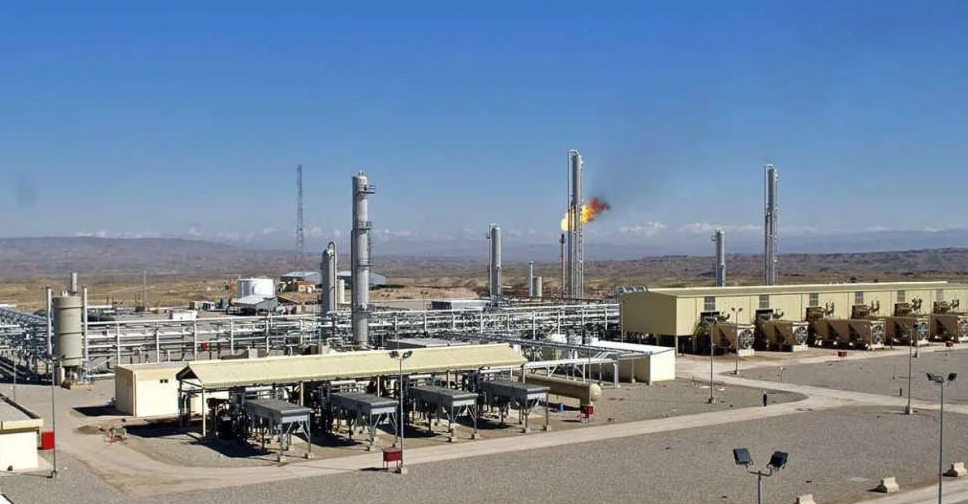
Exxon Mobil said on Wednesday its annual project spending will rise to between $28 billion and $33 billion between 2026 and 2030, with a goal of lifting oil and gas output by 18 per cent.
The top US oil producer laid out a five-year plan to expand output and increase earnings by 2030 by $20 billion over this year's projected $34.2 billion.
The new targets come as Exxon is riding high. Its Guyana operations are generating huge profits and its US shale business is on track to double oil production this year through its acquisition of Pioneer Natural Resources.
CEO Darren Woods said the increased project spending is expected "to generate returns of more than 30 per cent over the life of the investments." Exxon's focus on producing oil and gas from low-cost fields offers it a unique competitive advantage, he said in a media briefing.
Mergers remain a means to accelerate its businesses, Woods, said, adding: "the advantages we're growing in my mind opens the door for M&A (mergers and acquisitions)."
Exxon shares dipped 0.7 per cent to $111.92 with many of the projects and targets already known. The higher spending took analysts by surprise. Its prior capital spending excluding Pioneer-related outlays called for $22 billion to $27 billion a year through 2027.
"Production plans and the outlook for earnings look broadly in line" with expectations, wrote RBC Capital Markets analyst Biraj Borkhataria. "The market may remain skeptical around the earnings potential until we see further evidence of delivery."
The company's cost-reduction target was increased to $18 billion by 2030, said CFO Kathryn Mikells, up from the earlier $15-billion target by 2027. Exxon's strong balance sheet, with $27 billion in cash and equivalents, "provides a buffer against price volatility," said Mikells.
Exxon aims to more than triple its production in the Permian, the top U.S. shale field, to 2.3 million barrels per day by 2030 and pump 1.3 million bpd from its lucrative Guyana operations.
Overall oil and gas output should hit 5.4 million bpd, up about 18 per cent from 4.58 million bpd currently. Its long-range target is more aggressive than shown by US rival Chevron, which plans to reduce next year's project spending and slow shale production growth.
President-elect Donald Trump's pledge to encourage US oil production and "get out of the way of the industry" bodes well for Exxon and energy producers, Woods said. However, its plans can be revised based on market conditions, he said.
Exxon announced two new projects for Guyana by 2030, in line with a previous statement of seven to 10 in total. Its liquefied natural gas production target remains unchanged at 40 million metric tons per annum.
In its US shale operations, Exxon expects to achieve $3 billion in cost savings from combining with Pioneer's shale operations. Drilling engineers at Exxon headquarters remotely control the combined 35 drilling rigs operating in the Permian basin, said Vice Chairman Neil Chapman.
Improved economies of scale in drilling, water disposal and longer wells also have reduced the number of wells drilled while increasing the amount of oil recovered from each by 20 per cent. Exxon also is using a new fracking material supplied by its refineries to drain oil and gas from shale wells, said Chapman.
The new targets aim to assure shareholders that returns can be sustained through oil market price swings.
But Exxon’s 12.7 per cent year-to-date share gain is well above the sector’s about 8.4 per cent appreciation as measured by energy mutual fund XLE. Its share-price increase contrasts with double-digit percentage declines in shares in ConocoPhillips and Occidental Petroleum this year.
The company is investing in carbon capture and sequestration operations around the world. It has contracts for collecting 7 million tons of carbon annually, earning "very solid returns" from the business, said Woods.
Earnings from its low carbon solutions business can increase by $2 billion by 2030 compared to this year. Exxon has not broken out the unit's 2024 profit.
The acquisition of Denbury provided a carbon pipeline network that Exxon is using to develop its business helping industry reduce atmospheric emissions of climate-warming carbon dioxide.
Exxon will hold off on approving a massive hydrogen project in Texas pending revisions to US incentives for such projects, Woods reiterated. The administration of President Joe Biden set regulations to restrict incentives for hydrogen made from natural gas, a position Exxon opposes.
"How far we choose to go to invest will depend on the policies put in place," he said.
Cash not invested in the lower carbon businesses can be invested elsewhere, he said. Exxon is considering providing lower carbon energy for data center operators seeking to boost access to electric power.



 Nasdaq set to confirm bear market as Trump tariffs trigger recession fears
Nasdaq set to confirm bear market as Trump tariffs trigger recession fears
 Dana Gas and Crescent Petroleum exceed 500M boe in Khor Mor field
Dana Gas and Crescent Petroleum exceed 500M boe in Khor Mor field
 China to impose tariffs of 34% on all US goods
China to impose tariffs of 34% on all US goods
 Shares bruised, dollar crumbles as Trump tariffs stir recession fears
Shares bruised, dollar crumbles as Trump tariffs stir recession fears
 Wall Street futures sink as tariffs fuel recession fears
Wall Street futures sink as tariffs fuel recession fears



